Here Are The Biggest Mistakes People Make When Defrosting Meat
Advertisement
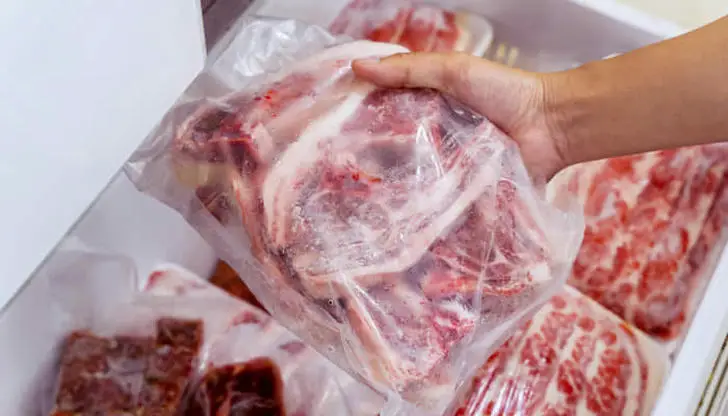
Are you tired of thawing frozen meat and finding yourself struggling to defrost it at the last minute? It's a common issue that many of us have faced, but rushing the process can lead to unsafe and unappetizing outcomes.
Depending on the type of protein, it can take up to a full day for the meat to thaw completely, and if you forget to take it out of the freezer ahead of time, you may find yourself resorting to potentially harmful methods like using the microwave or rinsing it with hot water.
But don't worry – here we’ve compiled multiple safe and effective ways to defrost meat, and taking the extra time to do it properly can result in a delicious and healthy meal. By avoiding common mistakes like rushing the process or using unsafe methods, you can protect yourself from food poisoning and cross-contamination. Read through the article below and don't fall victim to these common mistakes people make when defrosting meat.
1. Defrosting on the top shelf
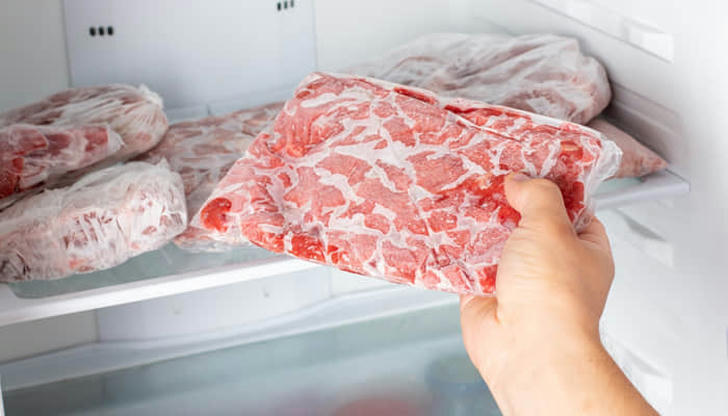
If you're looking for the safest method of defrosting frozen meat, then look no further than the refrigerator. Thawing beef, pork, or poultry directly from the freezer and placing it in the fridge is not only safe but also ensures that your meat is ready to cook when you need it.
However, there are some tips to ensure that you're thawing your meat correctly. It's essential to avoid placing protein, particularly chicken, on the top shelf of your fridge as it can cause raw juices to drip onto other foods, leading to cross-contamination from bacteria. This risk can be mitigated by placing the meat on the bottom shelf instead.
For even safer thawing, you can use a rimmed plate, jelly roll pan, or baking sheet to catch any drippings that may leak from the meat. These walled edges are perfect for preventing the contamination of other foods in your refrigerator.
2. Defrosting on the counter at room temperature
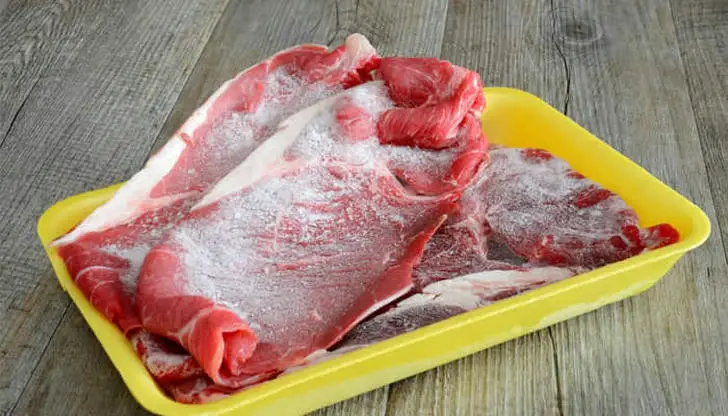
When it comes to preparing your favorite chicken recipe, it may be tempting to leave the icy chicken on the counter to defrost all day while you're working. However, it's important to note that thawing chicken on the counter is never a safe option. Leaving beef, pork, or poultry at room temperature creates an ideal breeding ground for Clostridium perfringens bacteria, which can grow and multiply quickly (as noted by the CDC). In fact, C. perfringens is one of the most common causes of food poisoning in the US, and according to CDC estimates, these bacteria can be found on raw meat and poultry and cause approximately 1 million food-related illnesses yearly.
It's crucial to follow guidelines from the National Agriculture Library, which recommends that food should never be left outside of the refrigerator for more than two hours. However, this two-hour limit is not enough time to unfreeze most chicken, pork, or beef, so it's never a good idea to use this method for defrosting meat. Instead, the safest option is to thaw meat slowly in the refrigerator. This allows the meat to come to a safe cooking temperature without posing a potential health threat.
3. Submerging meat in hot water
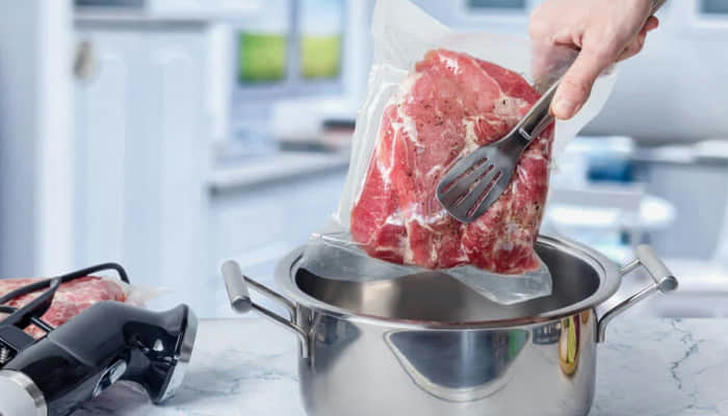
Thawing frozen meat is a crucial step to ensure safe consumption, but some methods can be dangerous. While hot water may seem like a quick solution to defrost beef or chicken, it can put you at risk of foodborne illness. That's because hot water can cause certain areas of the protein to enter what the Food Safety Inspection Service (FSIS) calls the "Danger Zone," where bacteria can multiply rapidly.
A better and safer way to thaw meat using water is to submerge it in cold water. Submerging the chicken, beef, or pork in cold water can soften the meat without bringing it to unsafe temperatures. But to ensure safe temperatures, the water needs to be changed frequently. According to the FSIS, changing the water every 30 minutes will prevent the protein from becoming too warm and entering the danger zone, which can lead to bacterial growth.
4. Cooking without thawing
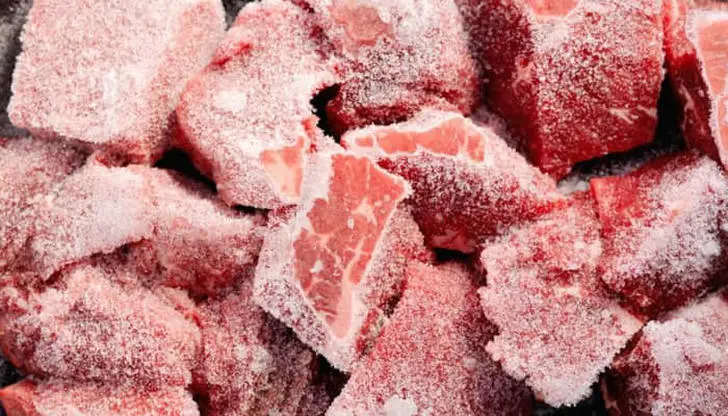
In a rush and tempted to throw a block of icy ground beef into a hot pan? Think twice! Not only does cooking frozen meat create a prime breeding ground for bacteria, but it can also negatively impact the taste and texture of your dish. When meat freezes, its juices form ice crystals that can evaporate when exposed to heat, resulting in a loss of flavor.
If you must cook frozen meat, plan ahead. According to the Food Safety and Inspection Service (FSIS), cooking frozen meat takes about 1.5 times longer than thawed meat to reach safe temperatures. While this method may not be ideal for preserving the full flavor and juiciness of your protein, it can be done safely as long as you use a meat thermometer to ensure the meat reaches the recommended internal temperature.
For ground proteins, the FSIS recommends a minimum internal temperature of 160 F, while chicken must be cooked to 165 F and steak to 145 F. To avoid risking your health and your taste buds, it's always best to plan ahead and thaw your meat properly before cooking.
5. Rinsing frozen meat before cooking
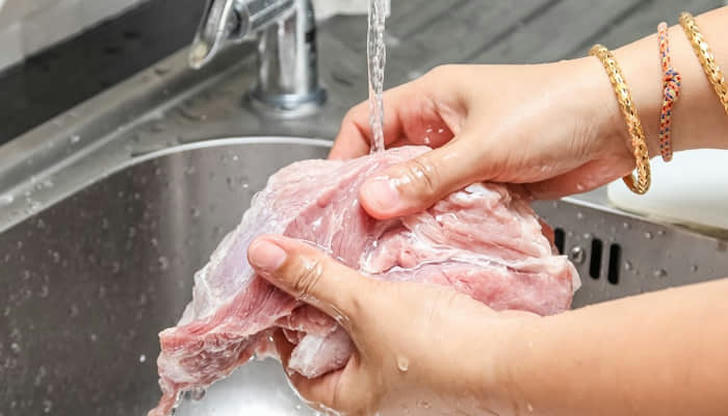
Thawing frozen food in cold water can be a safe option, but rinsing raw protein in the sink is a big no-no. The CDC warns that washing chicken or other raw meat can increase the risk of cross-contamination. This is especially true when the meat is frozen, as the bacteria are more likely to spread to other surfaces like your sink, countertops, or utensils.
Raw or undercooked chicken, beef, or pork may contain harmful bacteria like Salmonella, C. perfringens, and campylobacter, all of which can cause food poisoning. Rinsing the meat can spread these bacteria to other parts of your kitchen, making it difficult to clean properly. To avoid cross-contamination in your kitchen, it's best to skip the rinsing step altogether, whether the meat is frozen or thawed.
If you want to ensure the safety of your protein, the CDC recommends using a meat thermometer to check the internal temperature. For chicken, the temperature should be 165°F, while ground beef needs to reach 160°F, and steak should be at least 145°F.
6. Refreezing thawed meat
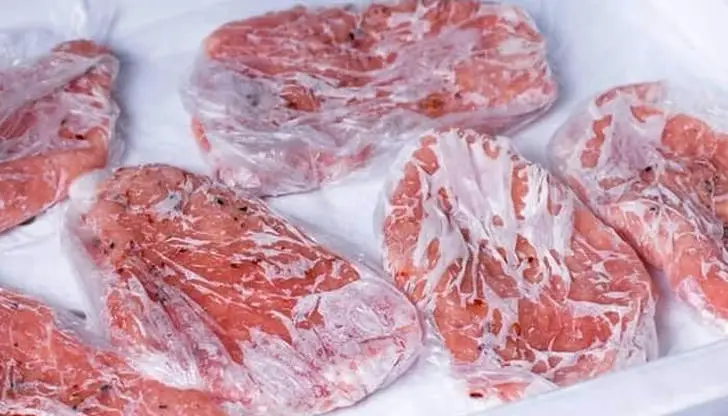
Don’t refreeze the thawed protein using the microwave or a water bath. This is because there is a high risk that the food has already reached the "danger zone" of 40 F or above, which creates an environment for bacteria to thrive. Instead, it is best to cook the meat to a safe temperature and then store it in the refrigerator until you are ready to consume it.
If you have safely defrosted the protein in the refrigerator and have kept it at a safe temperature, you can refreeze it without risking bacteria or spoilage. However, it is important to do so within three days of thawing in the refrigerator.
What about refreezing beef, pork, or poultry that has been unfrozen and cooked? It is possible, but only if you follow certain precautions. If you previously thawed the protein safely in the refrigerator, cooked it to the required internal temperature, and left it at room temperature for less than two hours, you can safely refreeze it. However, it is important to note that the quality of the food may suffer if you refreeze it a second time. So, it is recommended that you only refreeze it once and follow the same instructions when reheating it.
7. Storing improperly
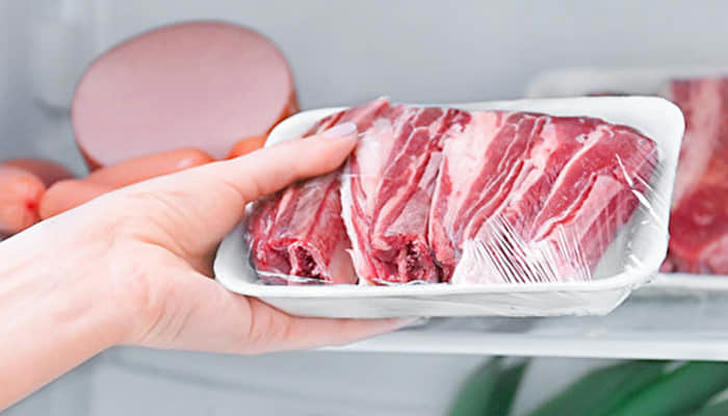
Freezing food in its original packaging is safe, but keep in mind that the packaging can allow air to penetrate, causing freezer burn and loss of quality. The University of Illinois recommends vacuum-sealed packaging for the best results. If the packaging is not vacuum-sealed, removing as much air as possible is ideal. Zip-top bags are a great option for freezing ground beef, pork, chicken, steak, and other meats. They help prevent air from permeating, reduce the risk of flavor loss, and prevent leaked juices and cross-contamination.
Another safe way to store meat is to use freezer paper. Wrap each piece tightly in the paper, which is designed with a plastic coating on the inside to keep juices in and protect against freezer burn. It is important to cover the beef, pork, or poultry tightly and to thaw it on a rimmed plate or dish to prevent any leaked fluids or the spread of bacteria. By following these tips, you can safely store and freeze your protein to enjoy at a later date without compromising its quality or safety.



